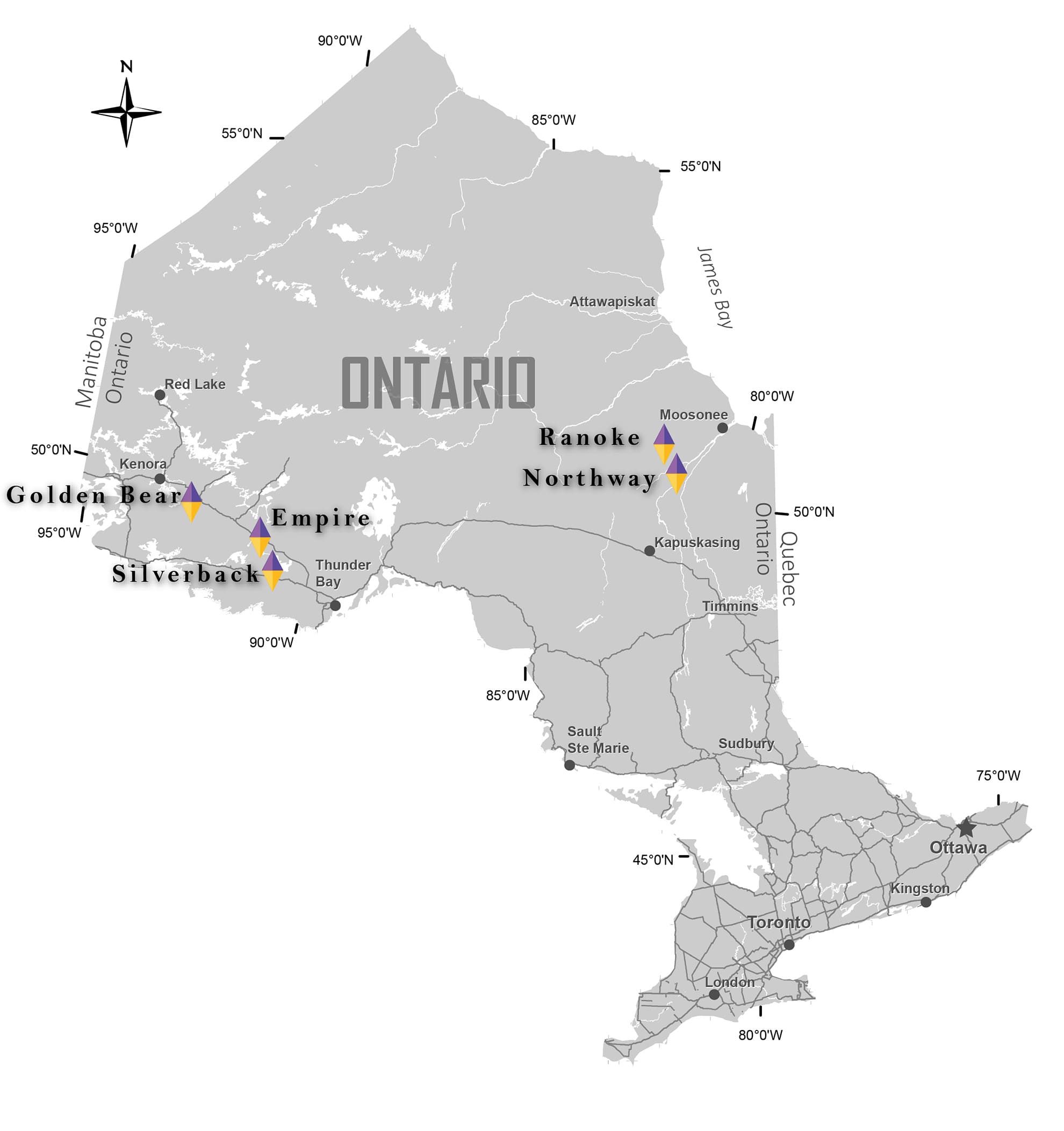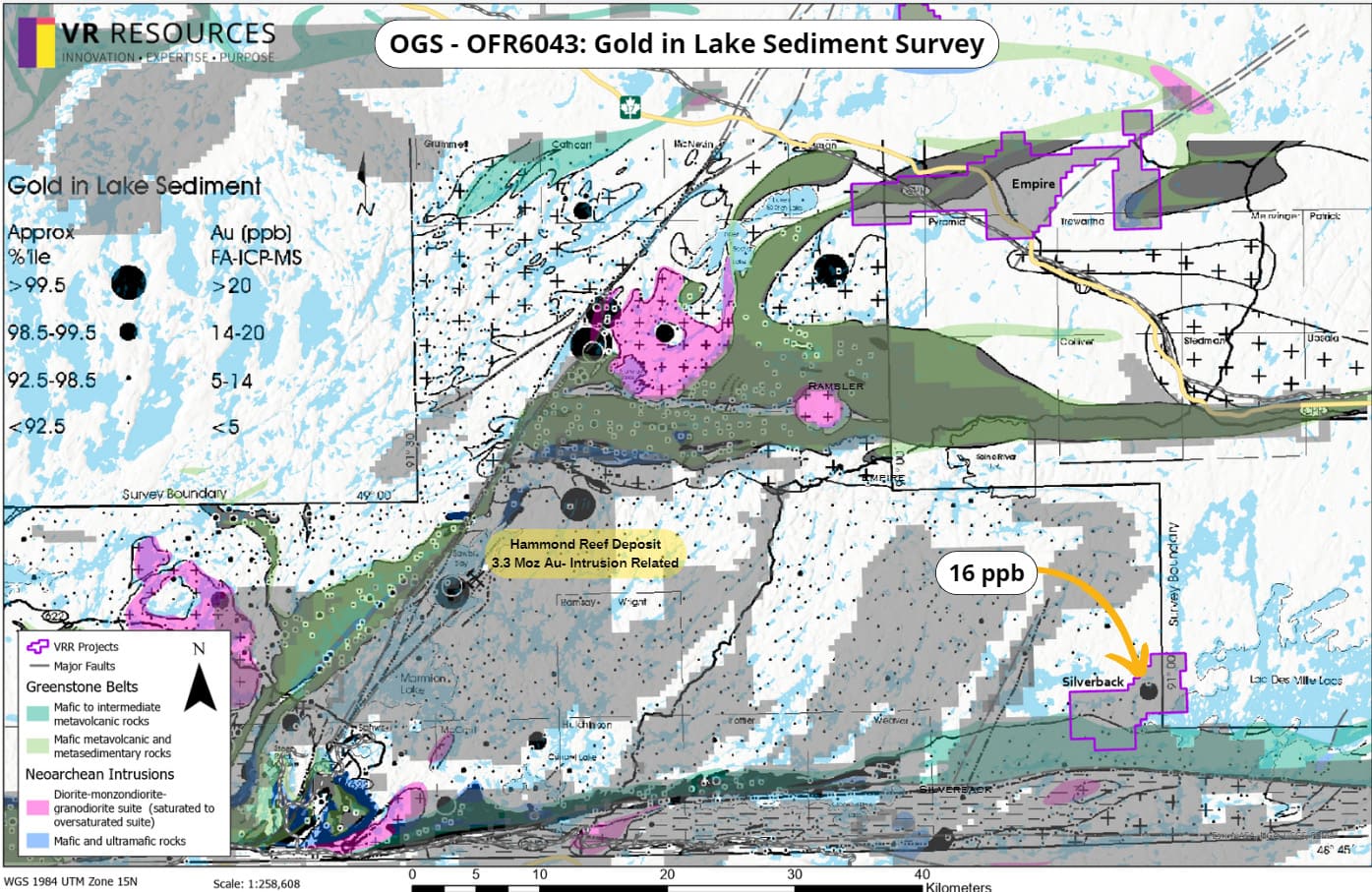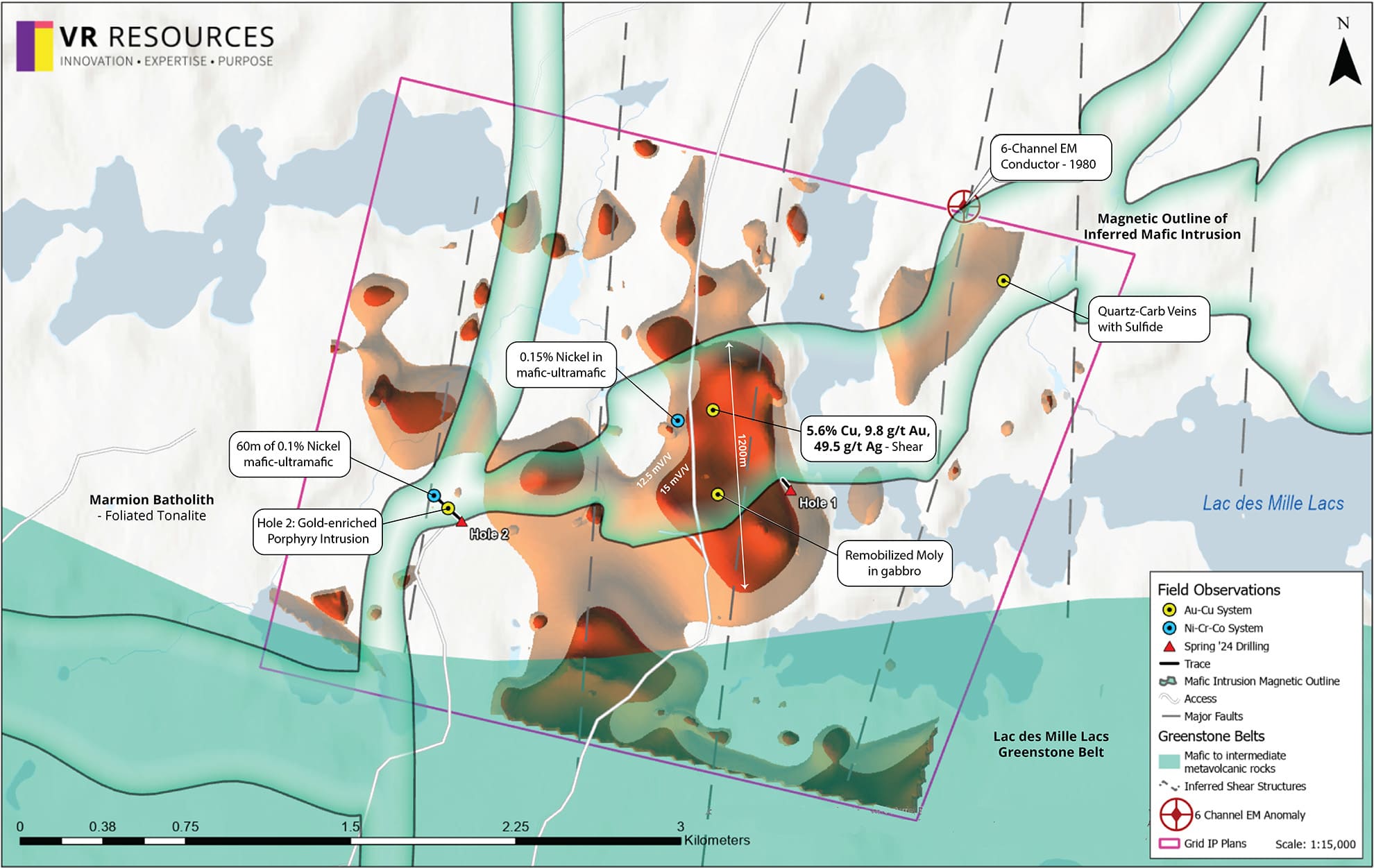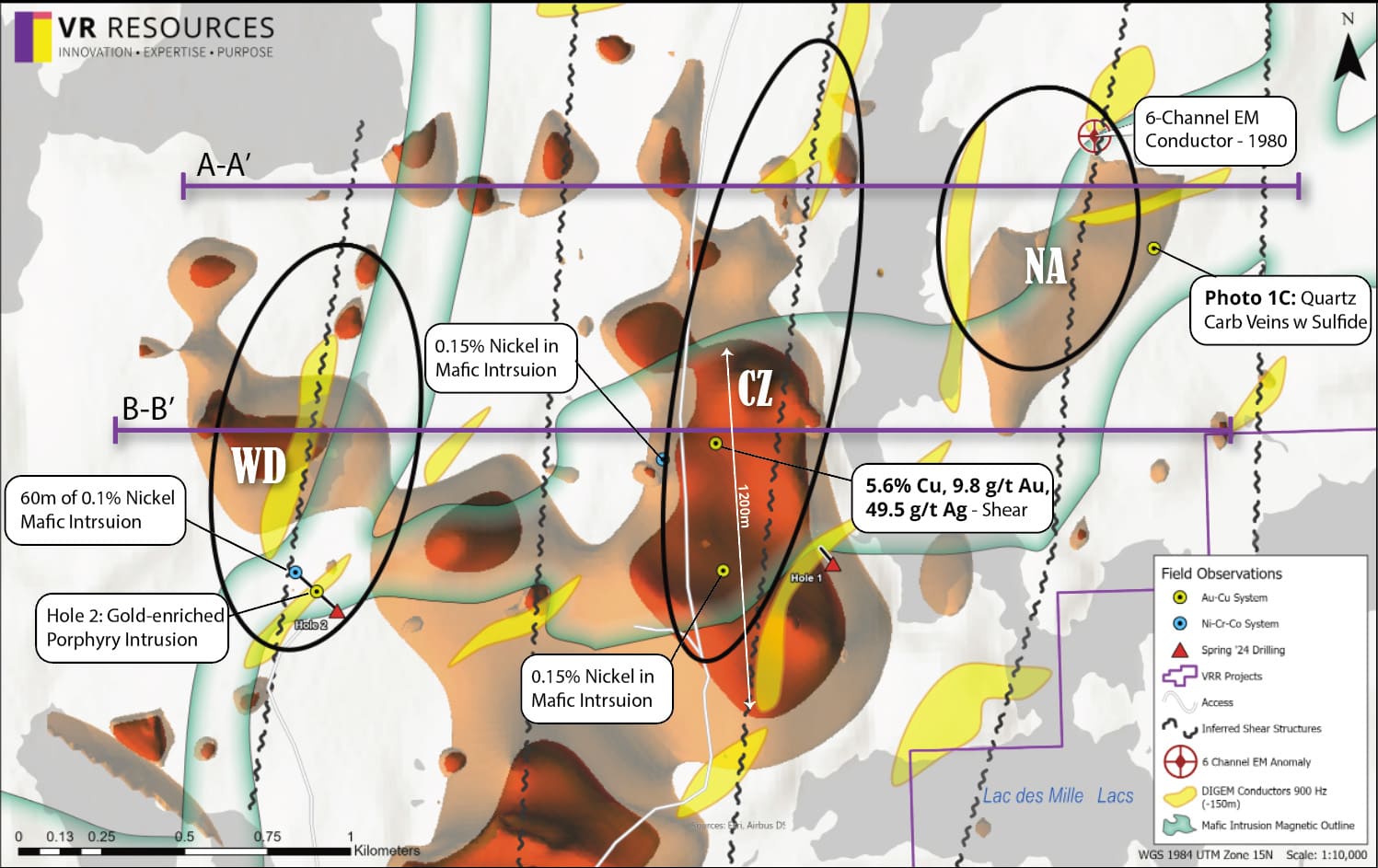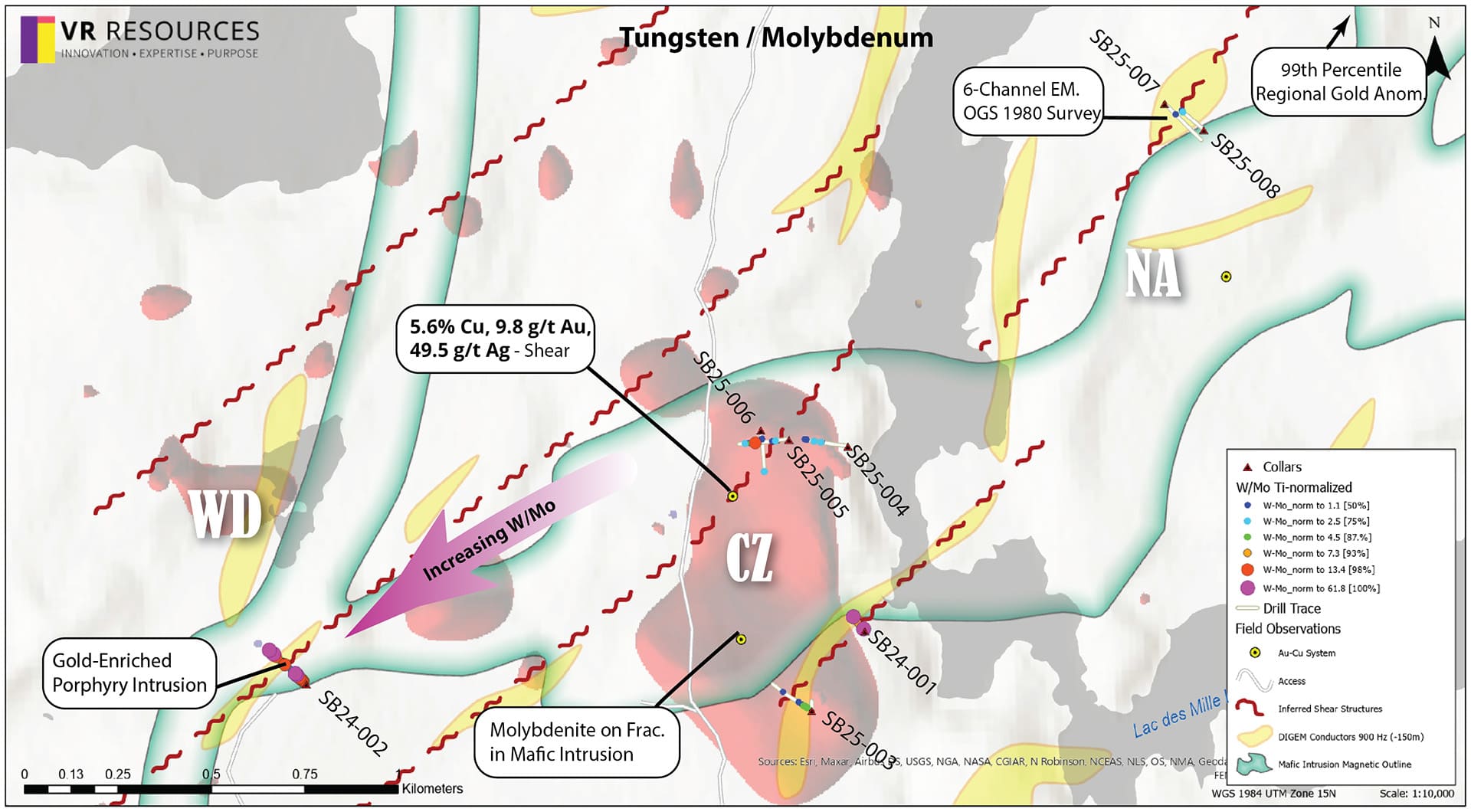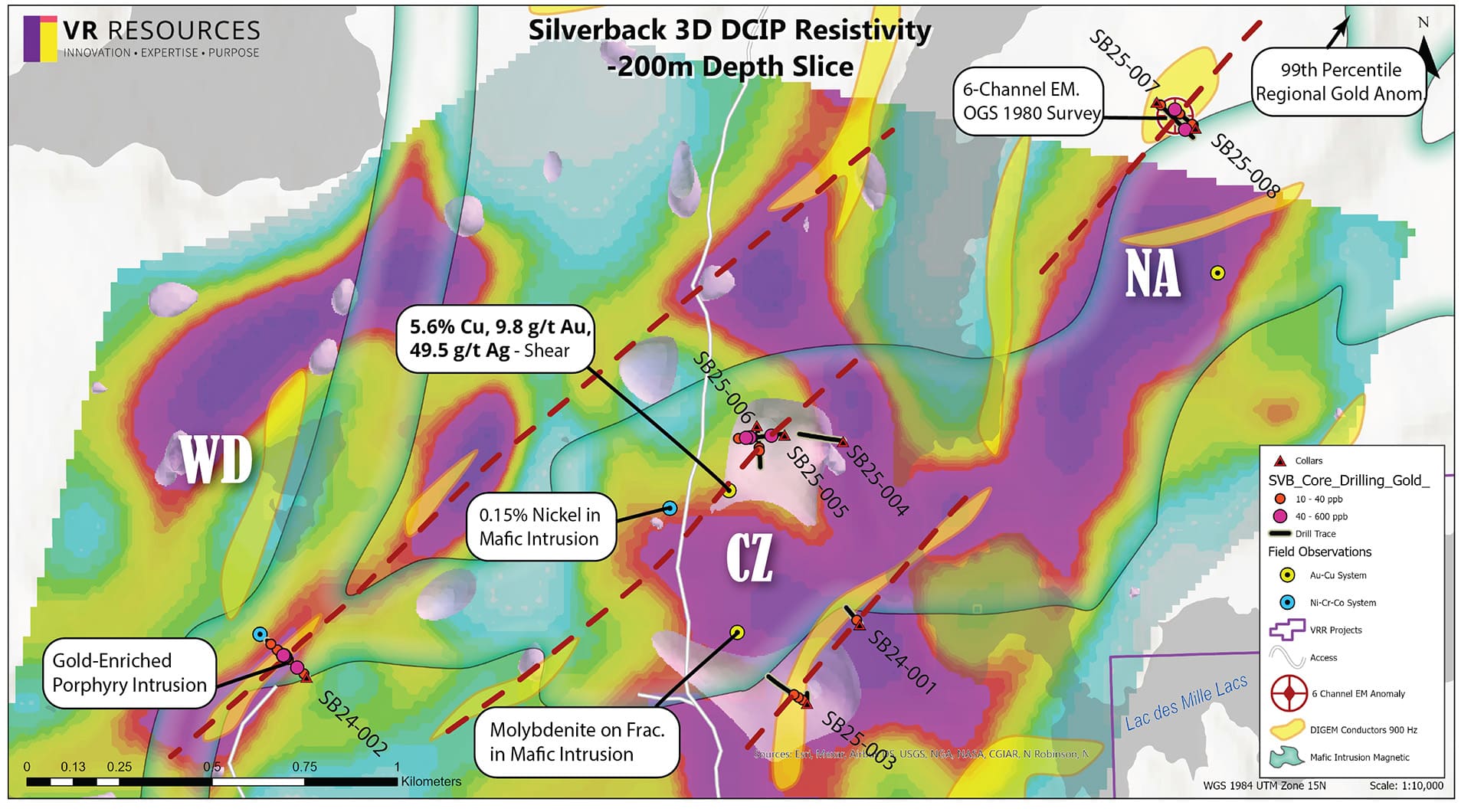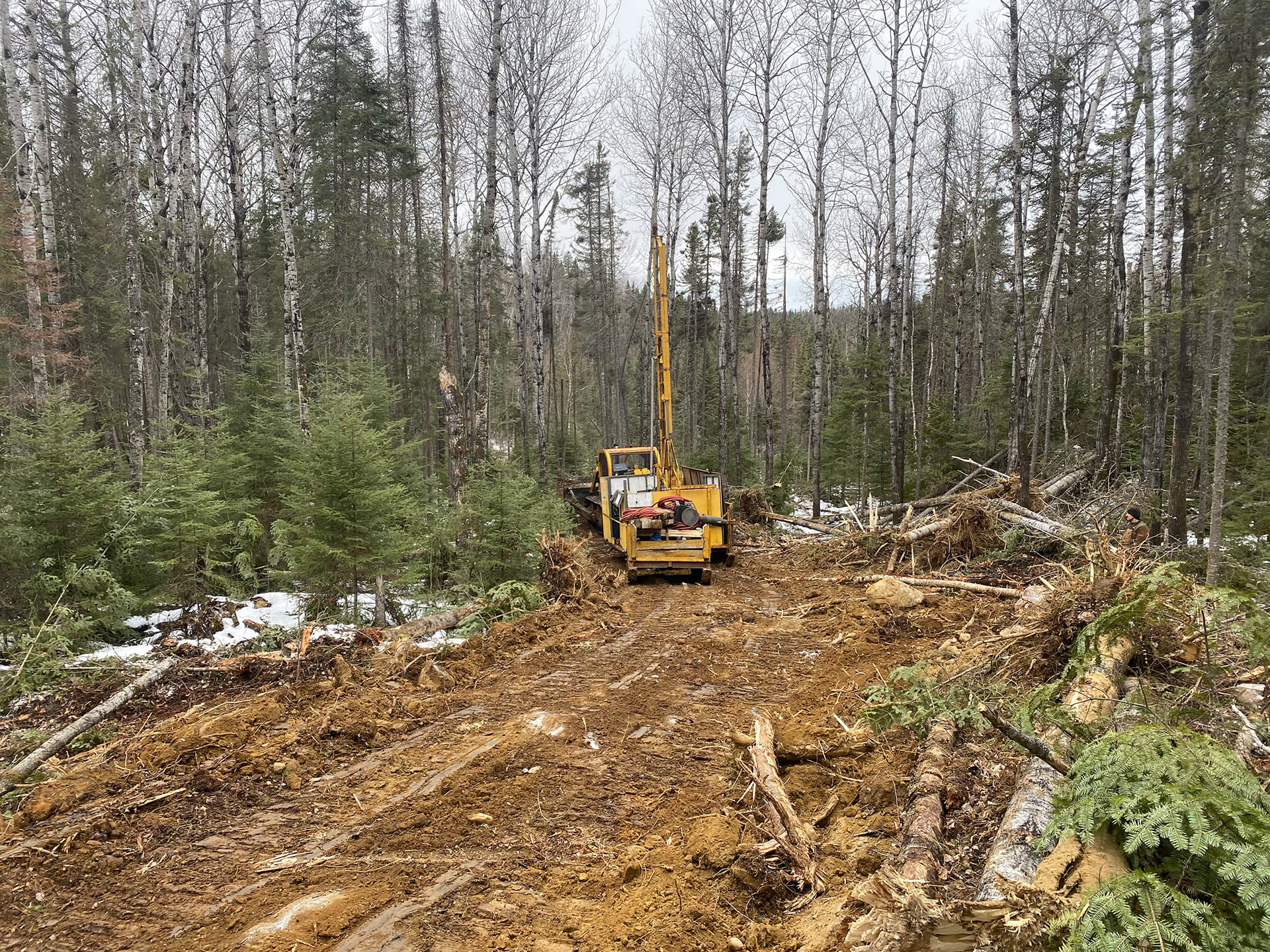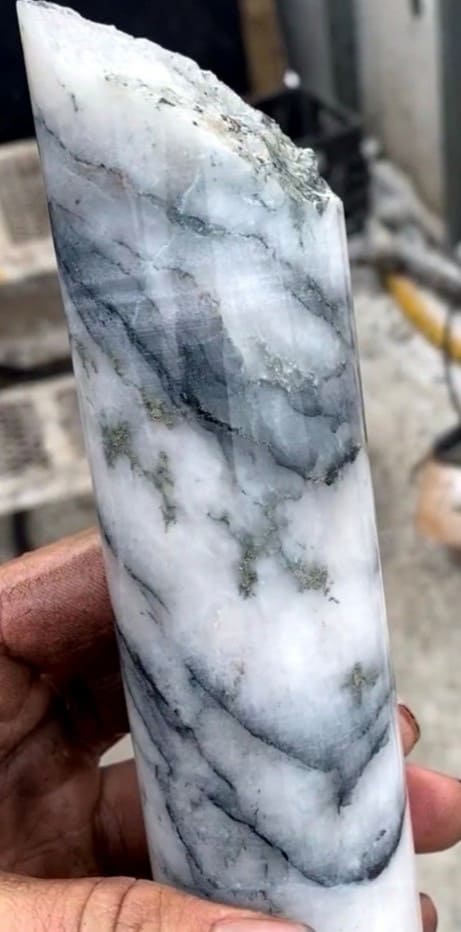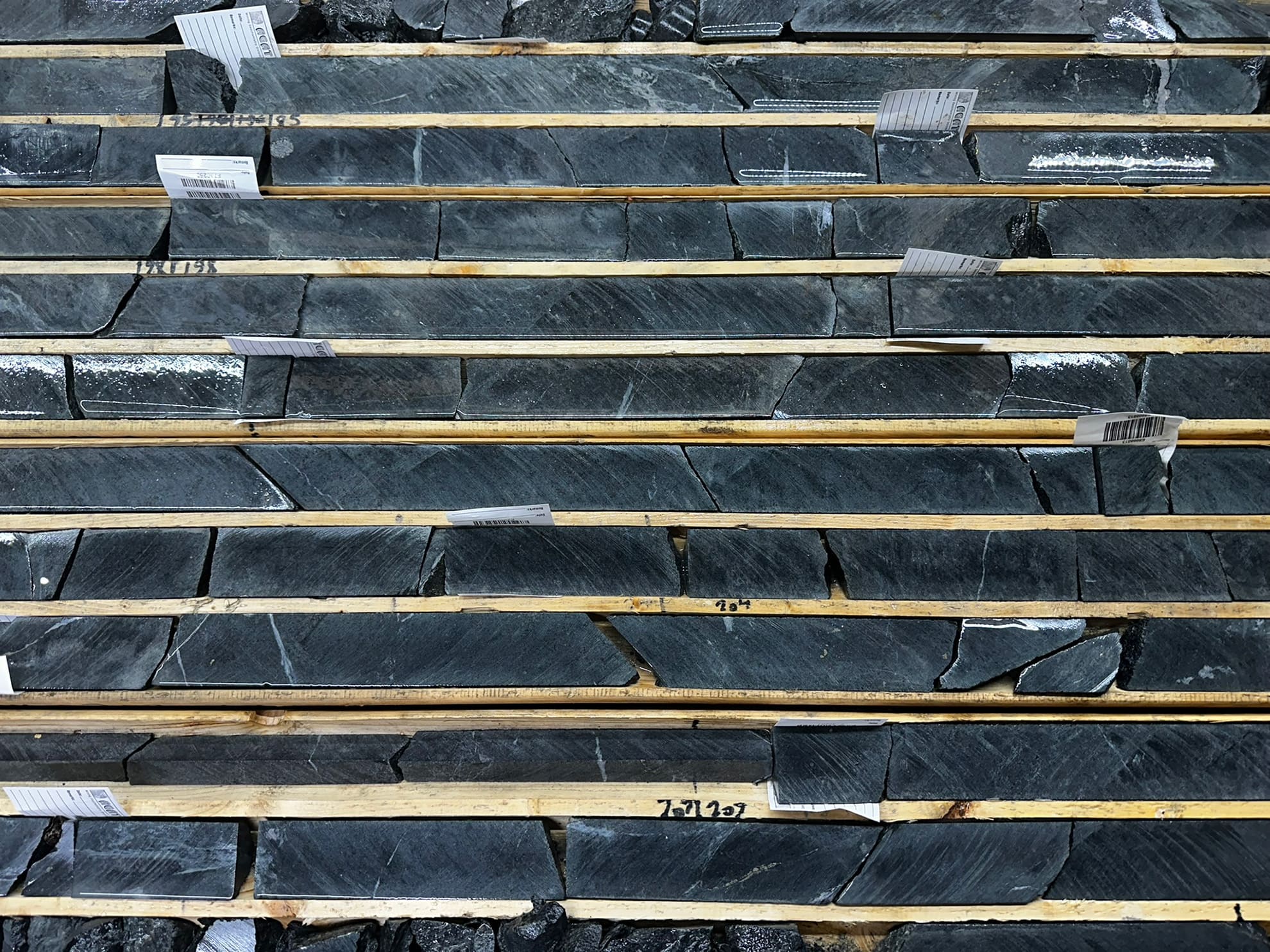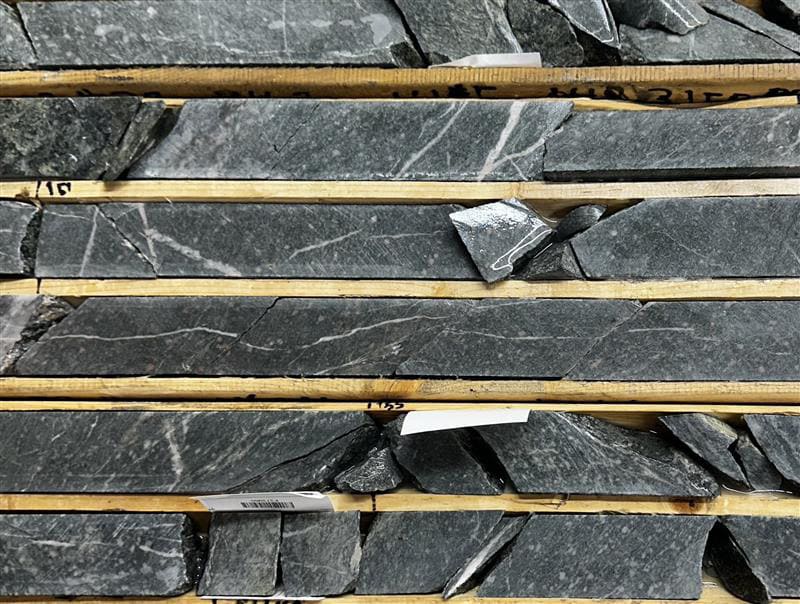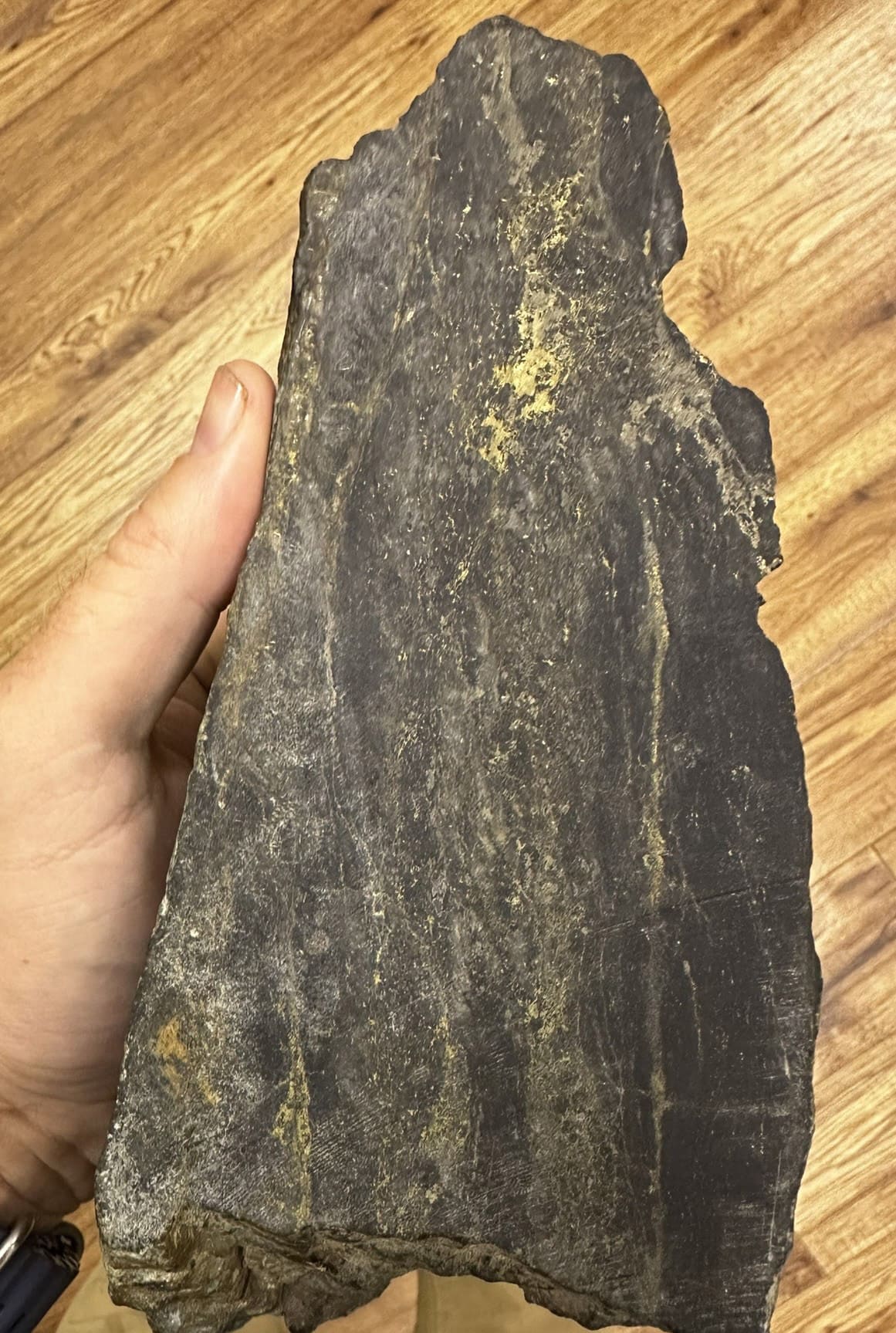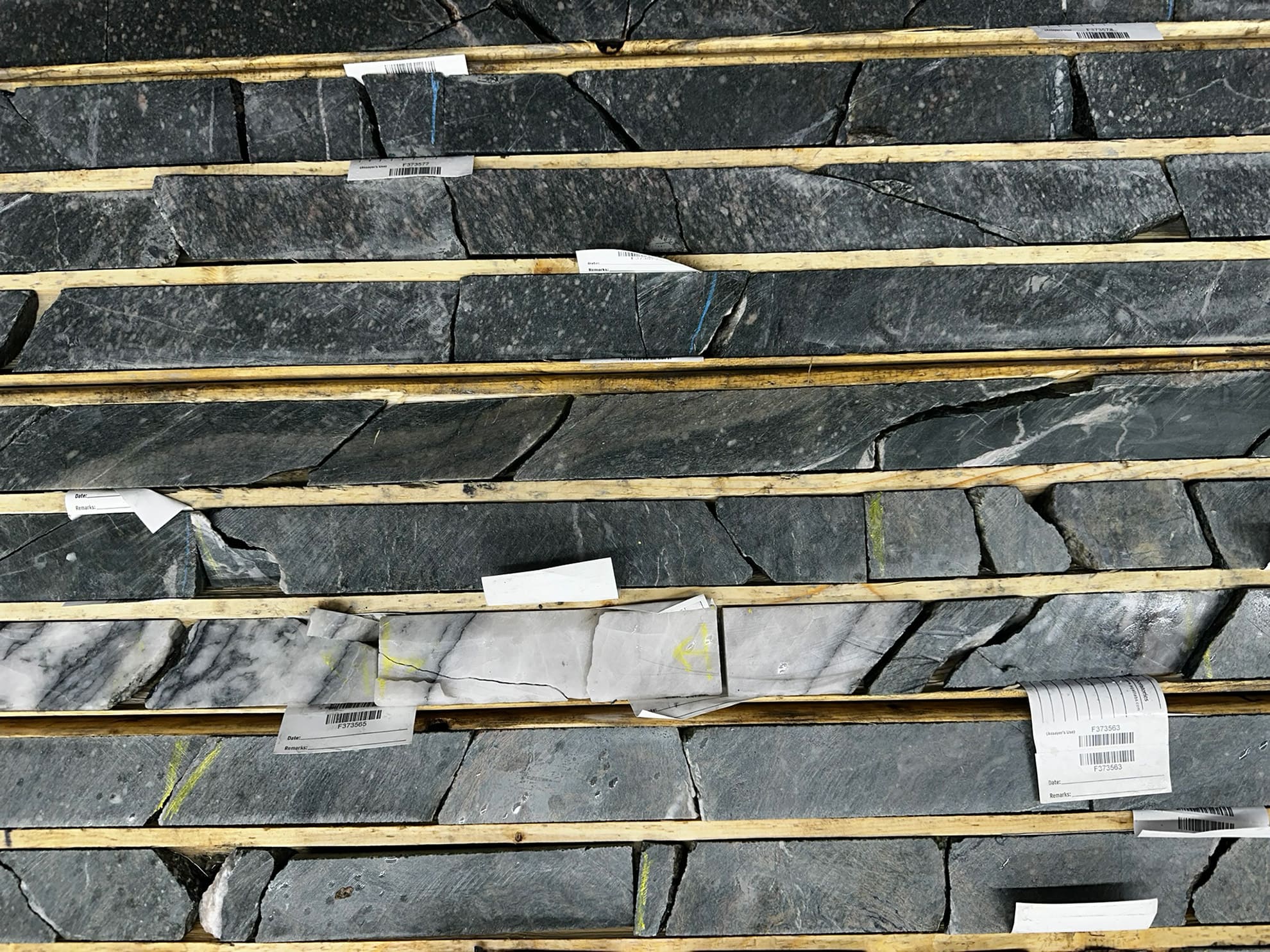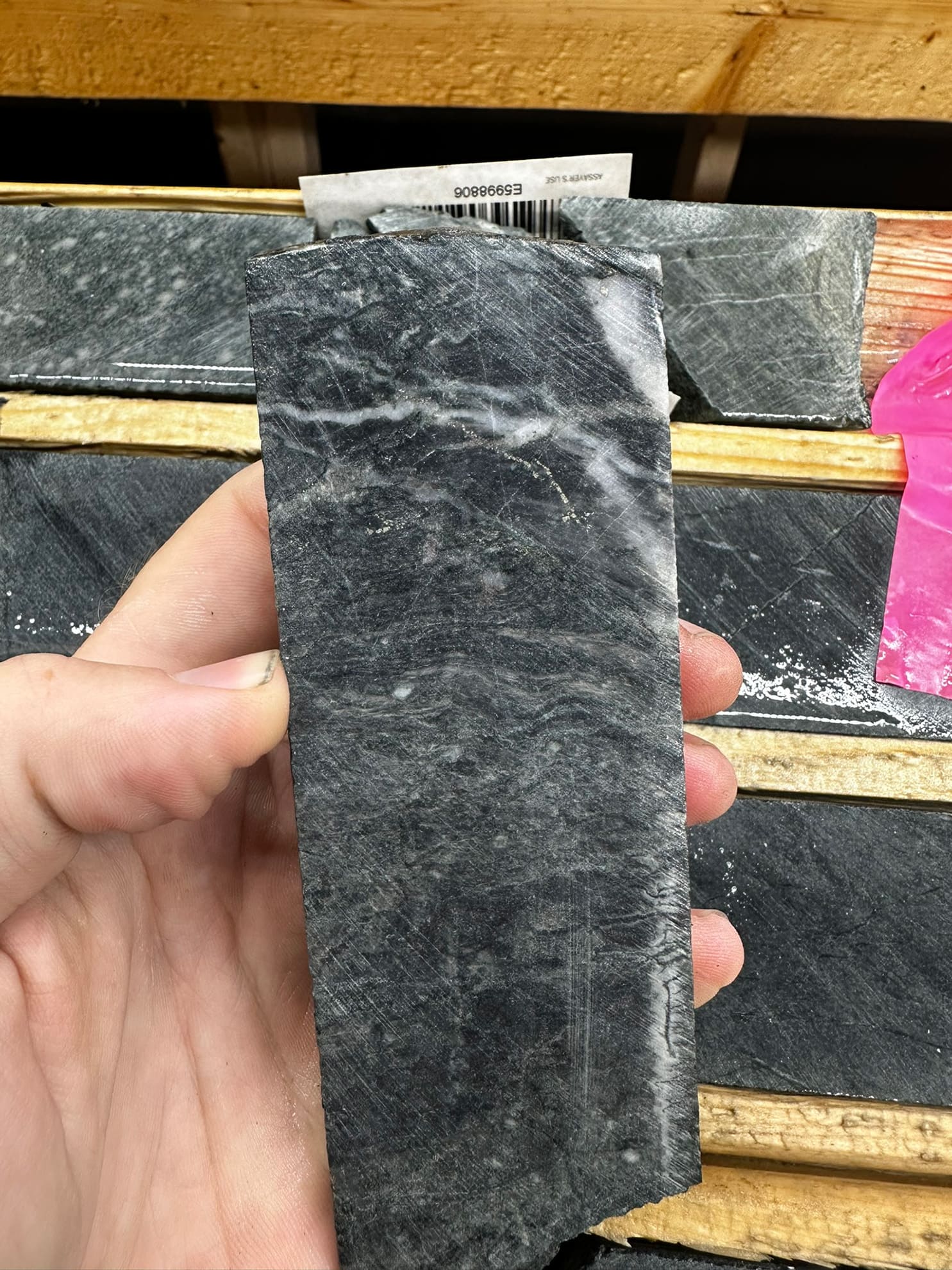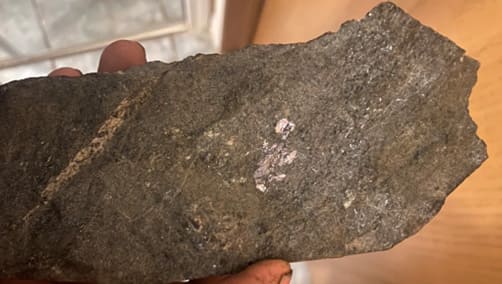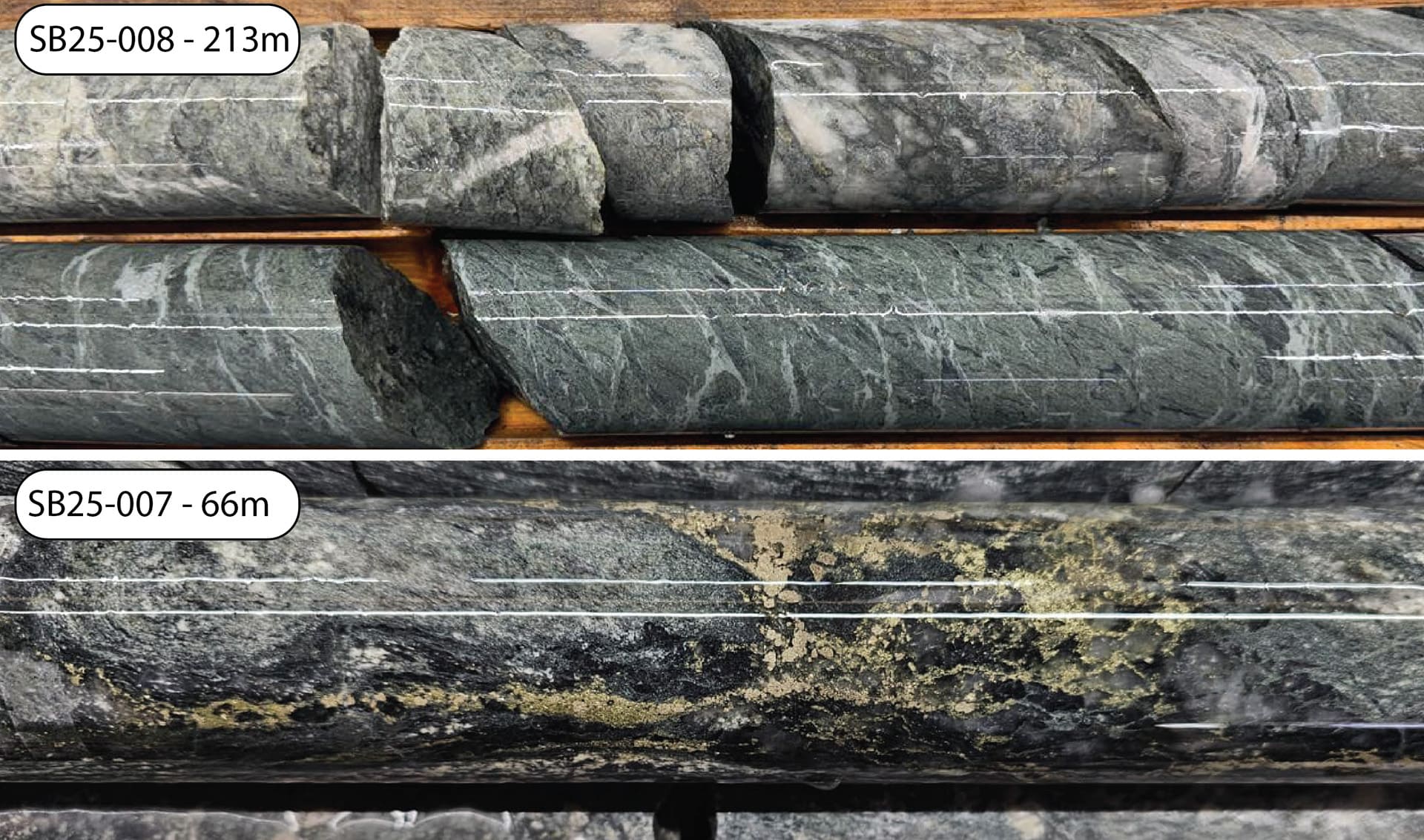The Silverback project features overlapping yet distinct targets for an orogenic intrusion-related shear zone hosted copper-gold-silver system and magmatic nickel-copper hosted in layered mafic-ultramafic intrusion spanning the property.
Spanning the northern margin of the Lac de Mille Lacs greenstone belt and the Marmion terrane in the central Wabigoon Subprovince, the property was staked in 2021 following the discovery of adjacent Ni-Cr-Co and Cu-Au showings. Anomalous nickel mineralization has been identified in high-magnetic feeder dykes and mafic bodies across a 3.5 km area, with remobilized copper, gold, and molybdenum mineralization observed along northeasterly shear zones, locally hosting up to 9.5 g/t gold and 5.6% copper in outcrop.
The presence of molybdenite on fractures reinforces an intrusive source for copper and gold mineralization at Silverback, yet also speaks to the temperature and intensity of orogenic fluid flow carrying these metals into shear-zone structures. Molybdenum, a critical pathfinder in the Hemlo gold camp, is typically found near the strongest gold mineralization, especially where overprinted by later sericite alteration and quartz-carbonate veining.
In late November 2024, a detailed 3D array DCIP geophysics survey was completed, successfully delineating three large near-surface IP anomalies that correlate with previously identified conductivity zones. These IP and Conductivity anomalies are now the focus of our 2025 drill program, which aims to test these high-priority areas for mineralization.
The two-hole, 314m maiden drill program conducted by Holbik Exploration in the spring of 2024 tested near-surface conductors derived from the 2023 DIGEM frequency-domain airborne survey. Notable results include anomalous gold across 109 meters in a sericite-altered porphyry intrusion with disseminated pyrite in Hole 2, alongside nickel and chromium mineralization in the adjacent gabbroic mafic-ultramafic dyke, as described in more detail in News Release NR24-23 dated October 24, 2024.
The mineralized porphyry is inferred source intrusion for the widespread copper, gold, and molybdenum mineralization first identified at Silverback, spanning approximately 3.5 km of the property. Gold mineralization on the project is associated with shearing within both the feldspar porphyry, nickel-rich gabbro, and mafic volcanics.
Target Area 1 – Central Zone (CZ)
- The largest and highest amplitude IP anomaly is 1.2 km long in the center of the project area and follows the north-south trending structural break that is evident in magnetic data. This structure is also associated with outcrops of sheared gabbro with high grade copper-gold mineralization, and with the occurrence of molybdenite on fractures.
- The IP anomaly comes to surface along a parallel trend of shearing, approximately 300 meters east of the main showing in an area of glacial cover.
- The magnetic response of the east-west trending mafic body forms a trough across the IP anomaly, possibly due to demagnetization from hydrothermal alteration along the Central Zone structure.
- To the north, beyond the 1,200-meter-long IP anomaly, the Central Zone structure has associated near-surface DIGEM conductivity anomalies, potentially caused by clay alteration, as observed in Hole 002 last year.
Drilling has confirmed a dominant northeast-trending shear system, with north-northeast splays, consistent with the broader regional deformation model. These structures correlate with DIGHEM conductors and high-amplitude chargeability anomalies, reinforcing their significance as potential gold-bearing corridors. The ongoing exploration program aims to further delineate the influence of these regional-scale shear zones on mineralization across the property.
